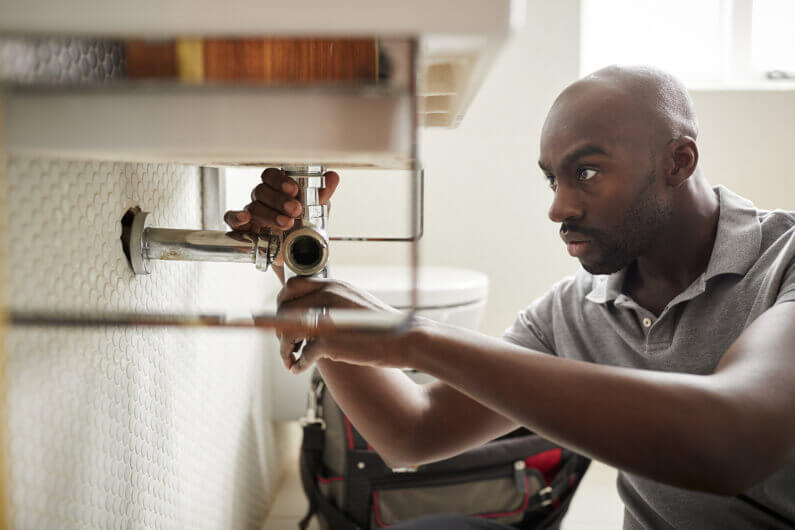Top-Rated Plumber Alabaster AL Ready to Serve You Anytime
Wiki Article
A Detailed Guide to Efficient Hot Water Heater Installment for Ideal Performance
Getting started on the task of setting up a water heating system is a venture that demands accuracy and a systematic method for attaining optimal efficiency. As you proceed, the ins and outs of attaching water supply lines and setting up reputable electrical or gas links wait for, encouraging insights right into making certain effectiveness and dependability.Picking the Right Water Heating System

Following, consider the size and capability of the water heating system. It's vital to evaluate your family's warm water demands, which can vary based upon the number of passengers and their usage patterns. A system that's as well small may result in inadequate warm water, while a large design may cause unneeded power consumption.
Efficiency ratings also play a critical function in choice. Search for hot water heater with high Energy Element (EF) scores, showing premium performance and minimized energy usage. Tankless designs, though usually a lot more costly upfront, offer substantial energy cost savings in time as a result of their on-demand heating capabilities.
Preparing the Installation Area
Prior to installing a brand-new water heater, careful preparation of the setup area is necessary. It's essential to gauge the space meticulously to accommodate the water heating system's dimensions, making sure adequate clearance around the system for efficient operation and maintenance.Examine the flooring for security, as the water heating unit will certainly need a solid, degree surface area to run successfully. If needed, mount a drip frying pan under the system to capture prospective leaks or spills, avoiding water damage to the surrounding location.
In addition, make certain that all essential devices and materials are on hand before commencing the installation. This consists of things such as wrenches, screwdrivers, a degree, and any type of additional hardware required for placing and safeguarding the heating unit. A well-prepared installation location establishes the structure for an effective water heating unit configuration, enhancing performance and security.
Connecting Supply Of Water Lines
When connecting water lines to your recently installed hot water heater, it is critical to make certain that all connections are leak-free and secure to keep effective operation and protect against water damages. Begin by identifying the hot and cold water system lines. The chilly water inlet is normally noted with a blue label or a "C", while the warm water electrical outlet is marked with a red label or an "H".Use versatile water heating system connectors to help with a much easier installment process. Before connecting the ports, put a plumber's tape around the threaded ends of the water heater's inlet and outlet pipelines.
When links remain in area, gradually activate the main supply of water valve. Examine each link for leakages by visually inspecting and really feeling for wetness. Tighten up links as needed, and make sure the stress alleviation shutoff is appropriately mounted, securing versus too much stress build-up.
Setting Up Electrical or Gas Connections
Effectively setting up the electrical or gas links for your water heating unit is a crucial action to guarantee Look At This safe and reliable procedure. For electric water heating systems, begin by validating that the electrical circuit is compatible with the heating system's voltage and amperage requirements.For gas water heaters, security is extremely important. Connect the gas line to the water heating unit making use of a flexible gas port, guaranteeing it is properly threaded and sealed with pipeline joint substance or Teflon tape suitable for gas connections.
When connections are made, check for any potential leakages. For gas lines, use a soapy water solution to the joints; bubbles show a leak. For electrical links, confirm that all circuitry is secure and properly shielded, preserving compliance with regional electric codes.
Readjusting and examining for Performance
With the electrical and gas connections securely in position, the next step is assessing the operational efficiency of browse around these guys your hot water heater. Begin by meticulously switching on the water and making certain there are no leakages at any one of the joints or shutoffs. When verified, proceed to fill up the tank, paying attention to the pressure and temperature setups. It is suggested to establish the thermostat to an advised temperature level of around 120 ° F(49 ° C) to balance energy efficiency and convenience.Next, carry out a complete assessment to guarantee the burner or burner are functioning appropriately. For electrical heating units, utilize a multimeter to validate if the aspects are attracting the proper current. In gas designs, observe the burner fire; it ought to be blue and steady, suggesting efficient burning.
Adjust the setups as required to eliminate inadequacies. Consider applying insulation steps, such as including a water heating unit blanket, to additionally enhance efficiency by minimizing warmth loss. Additionally, examine the anode rod's problem, as a worn-out rod can minimize efficiency and cause tank deterioration.
Conclusion
Reliable water heater setup is critical for making sure optimum performance and energy financial savings. Securely linking water supply lines and meticulously setting up electrical or gas links lessen possible concerns.
Appropriately setting up the electrical or gas links for your water heating system is an important action to ensure safe and effective procedure. For electric water heaters, begin by validating that the electric circuit is compatible with the heating unit's voltage and amperage needs. important link Connect the gas line to the water heater using a flexible gas connector, guaranteeing it is properly threaded and sealed with pipeline joint substance or Teflon tape ideal for gas links.
Report this wiki page